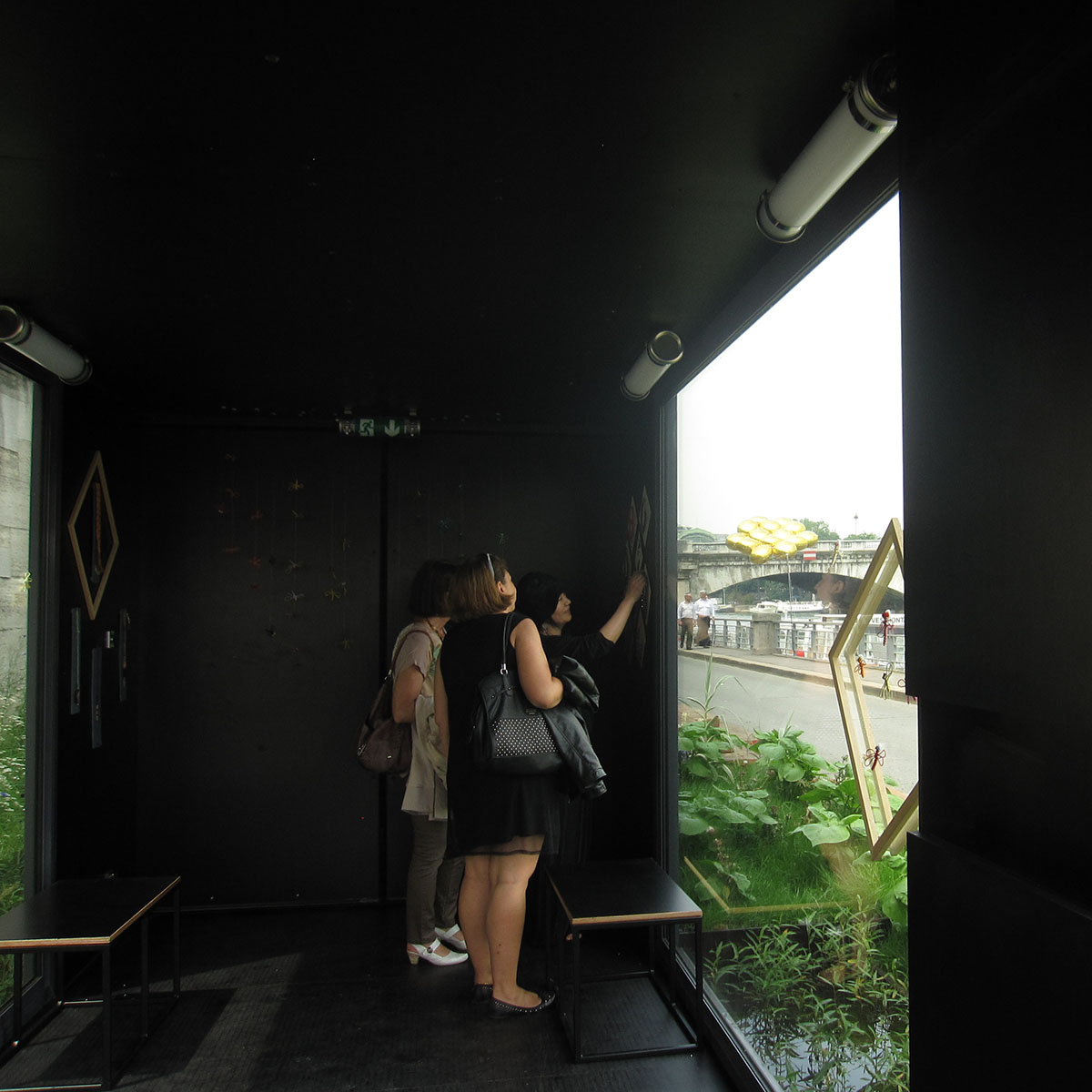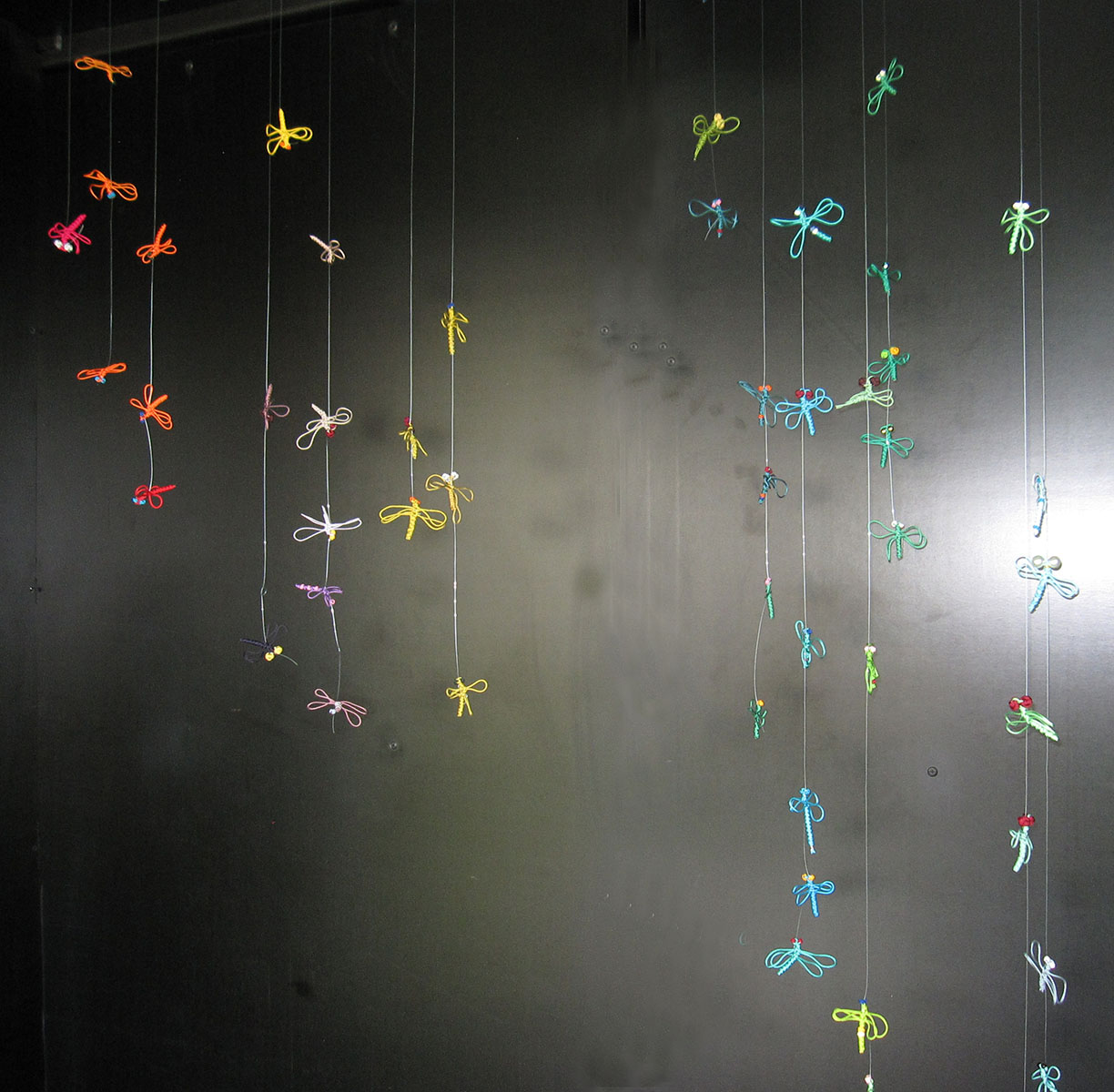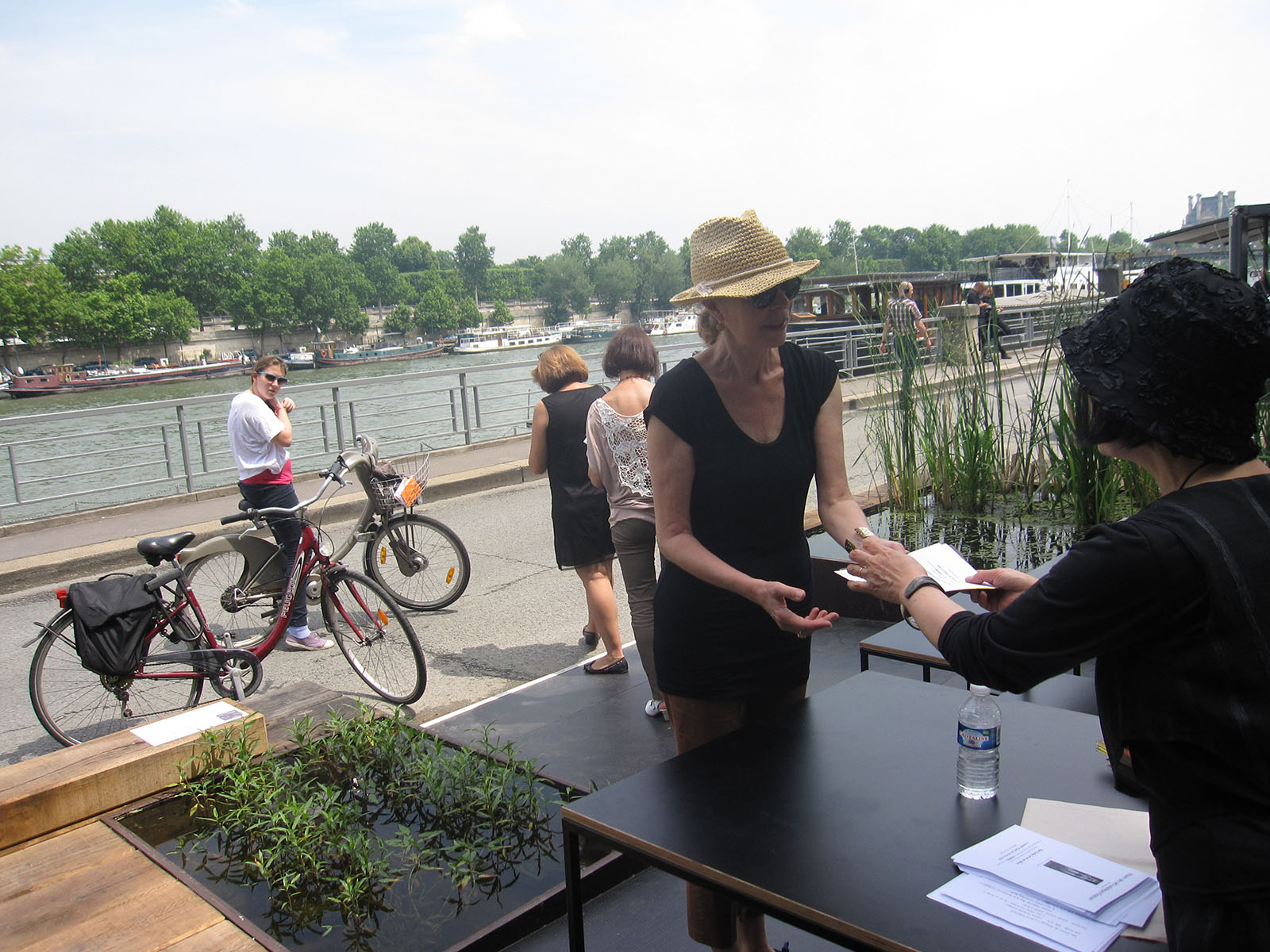Maedup
From Twine to Macrame
The arrow root and the wisteria are products of nature, but once we cut them off and tie them together they become twine and knot, products of human culture. There are those who say that human culture and civilization originated in the twine. To be precise, twine, like words, was used to signify meaning, and, as we know, for culture to exist there must be some way to convey meaning. The role of twine in the genesis of civilization is witnessed in prehistoric earthenware pottery, where we find patterns made from twine which were thought to bear special significance.
For twine to fully serve its purpose, though, the technique of knot tying had first to be learned. If we did not know how to use twine, this twine would have been of no avail. Therefore it is no exaggeration to say that without the knot the primitive skills of civilization could not have developed as they have. Information had to be conveyed and records kept. The twine and knot depicted meaning as words do. A concrete example of this can be found in the knotted
rope used in pre-literate times.
I have mentioned in other pages that the twine is to the Korean what the button is to the Westerner; we can even go so far as to say that twine is the basis of Korean culture. Korea’s first twine was made from straw, which was until recently the most frequently used material in Korea. The origin of all our technical skills can be found in the making
of straw twine, which was then combined by knots with other twine to make straw shoes, straw packs and straw baskets.
In Korea twine and its knot are not used only for making things. The Korean views life in terms of twine and its knot. When a Korean talks about people meeting and parting he will often express it in terms of twine, as tying and untying, joining or breaking. And if he is in straightened circumstances with no one to tum to, he says in this situation, “my string broke.”
On Korean clothing you do not see buttons; clothes are equipped with twine’s mate, the strap. Imagine what would happen if our clothes did not have the strap. It would be like shoes without laces, but worse, because the strap also serves as decoration, both in its design and in the way it is fastened.
Twine, too, serves not only a practical purpose but a decorative one as well. The craft of macrame is the embodiment of the philosophy inherent in twine. In Korean terminology the definitive elements of macrame are its nose (the individual knot), its body (the knots knotted together}, and its hands (the tassels). Depending on what kind of nose is used, the macrame’s pattern can be flat, it can resemble the vine, or it can imitate the chrysanthemum. Each nose forms an empty circle, and so signifies the same as the knot in the strap on our clothes, which is never tied tight, thereby giving a sense of serenity and poise. The body, on the other hand, indicates strength and solidarity, because here all the noses are joined securely together.
The hand serves the same symbolic purpose as the end of the strap on a piece of clothing, which is pulled to open the knot. In contrast to the body, the hand signifies loosening rather than binding, and tells us of itself that, no matter how intricately bound, here is the key which can free. So the body and hand can be donsidered in terms of opposition, and the nose as their mediator.
The balance of these three elements gives the macrame its beautiful composition. It reminds us of how life is actually an exercise in both the formation and unravelling of relationships.
All activity is performed within the restrictions of time. Macrame takes a lot of time, but it is also an activity performed in space, and so it has structure. Macrame is the depiction of a culture of the twine, and it depicts the evolution and the composition of the Korean spirit.
Lee, O-Young, Translated by John Holstein, Korea In Its Creations, Design house, 1994, p. 43


